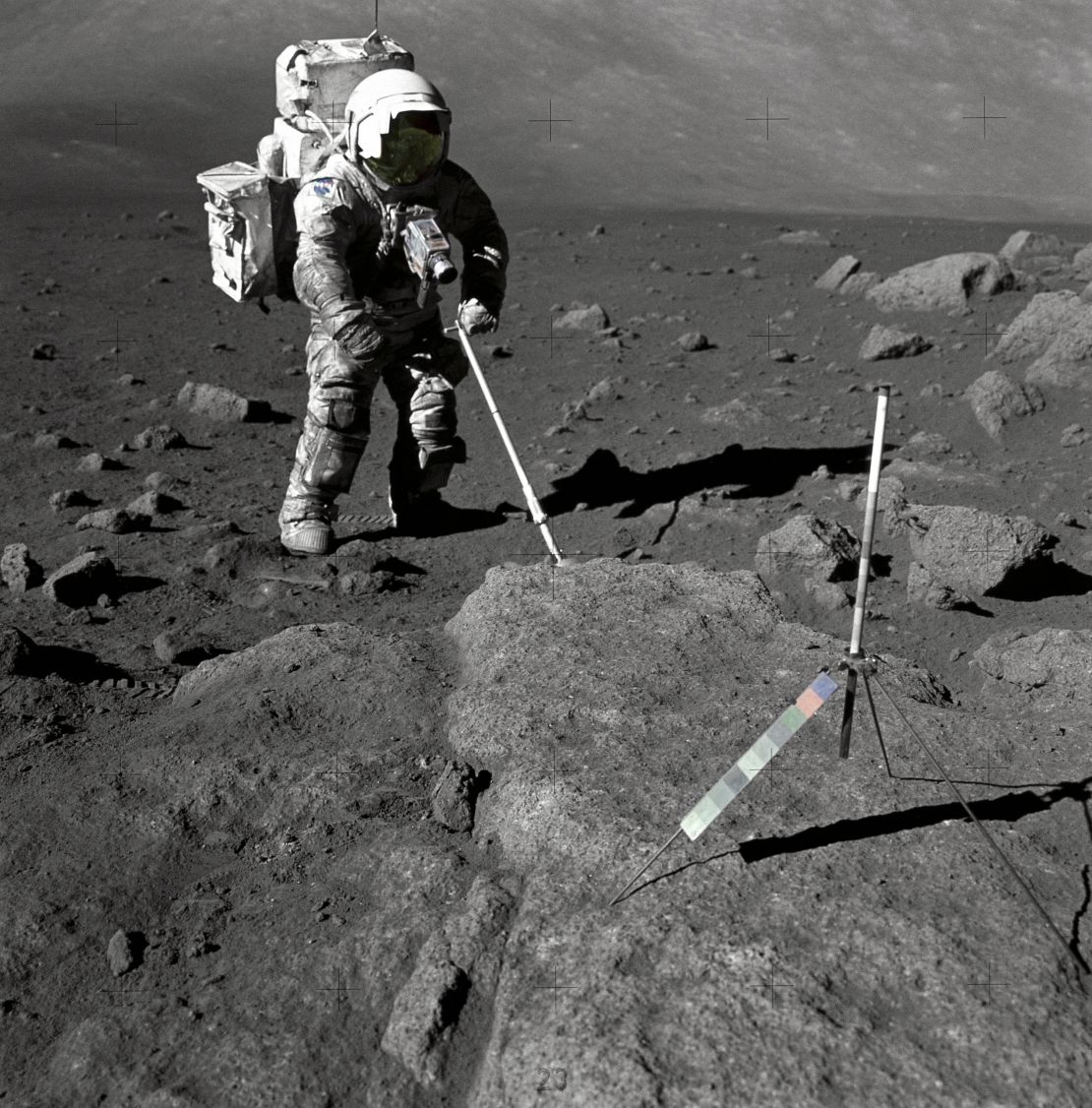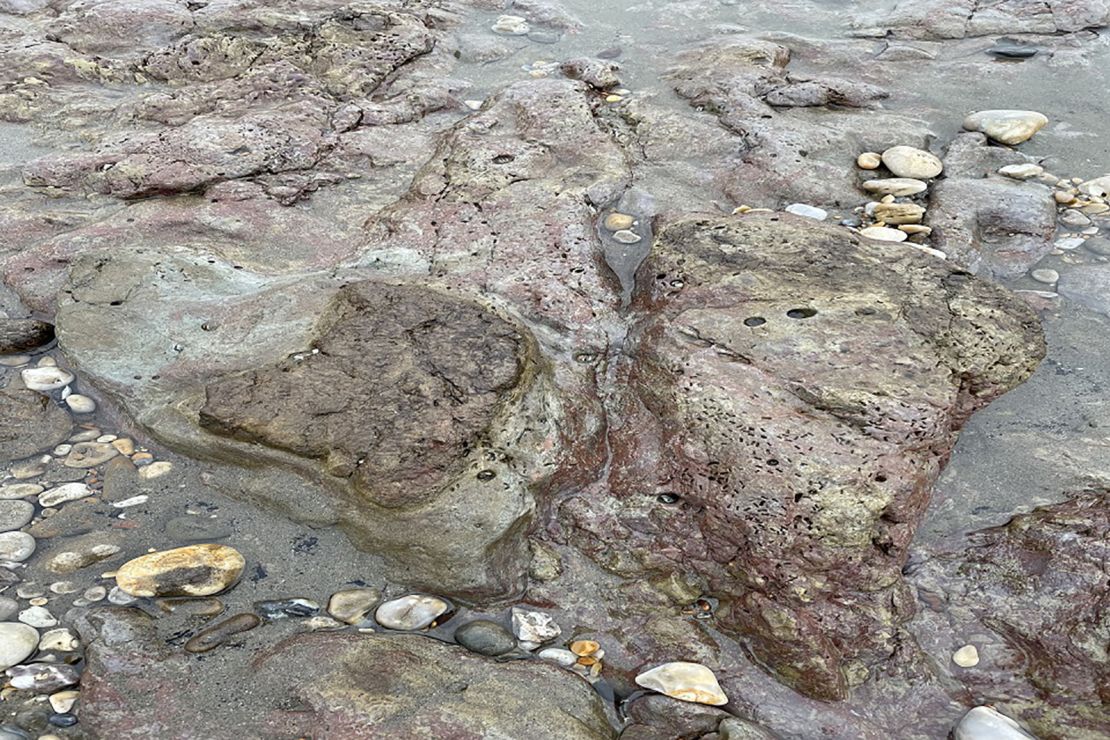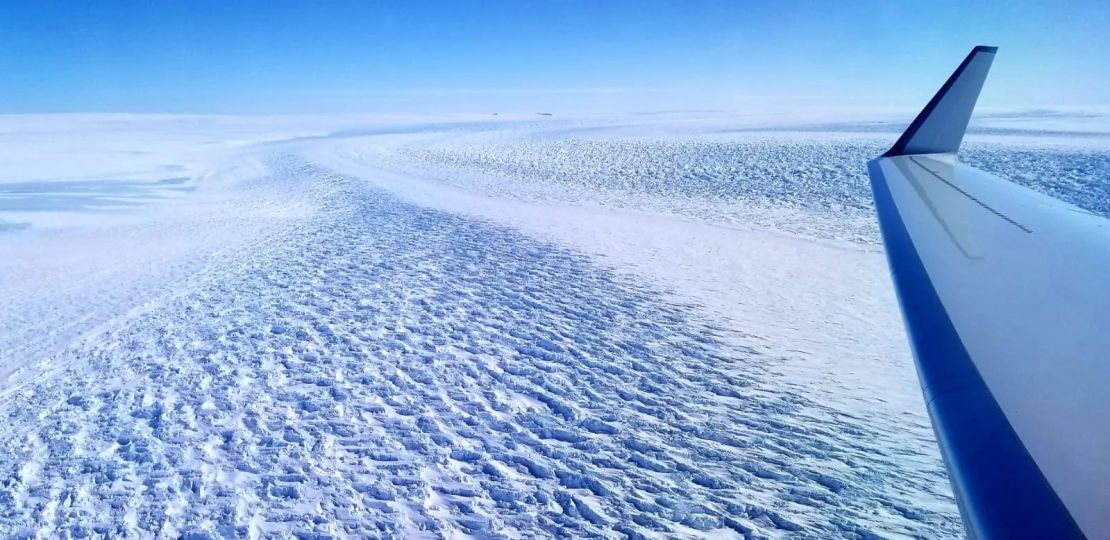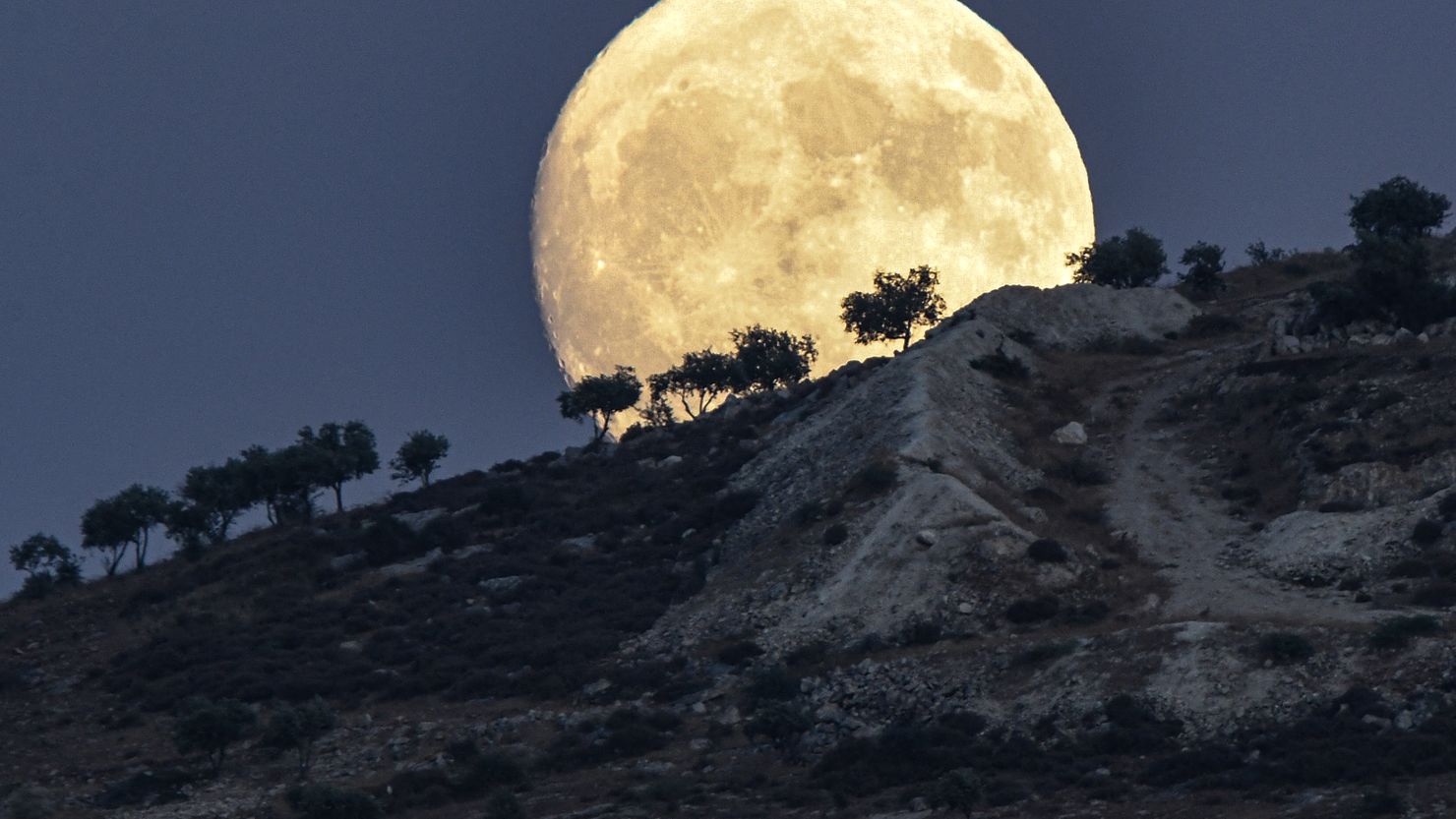Editor’s note: A version of this story appeared in CNN’s Wonder Theory science newsletter. To get it in your inbox, sign up for free here.
The moon is our planet’s constant celestial companion, only shaded from view about once a month when its orbit takes it between Earth and the sun.
Earth’s biggest satellite has long been a source of awe and wonder, inspiring the imaginations of artists and writers for millennia. The moon’s gravitational pull is also the force behind ocean tides and partly why our planet has a 24-hour day.
Be sure to look up this Saturday evening, when a full hunter’s moon will shine in the night sky. Lucky sky-gazers in Europe, Africa, most of Asia and western Australia will also glimpse a partial lunar eclipse, when Earth’s shadow appears to take a “bite” out of the moon.
Although the moon is Earth’s nearest neighbor, many secrets remain — mysteries that could be solved by paying a visit to the lunar surface.
Lunar update

When Apollo 17 astronauts Eugene Cernan and Harrison Schmitt scooped up rocks and dust from the lunar surface in 1972, they unknowingly brought back the answer to one of the biggest questions about the moon: its age.
More than 50 years after the sample was collected, scientists detected crystals in lunar dust that revealed the moon is 40 million years older than previously believed.
The moon was created when a Mars-size object crashed into Earth, flinging a large rocky piece into space that went into orbit around our planet. Zircon crystals formed as the moon cooled 4.46 billion years ago, and a new analysis traced them in the Apollo 17 samples.
“It’s amazing being able to have proof that the rock you’re holding is the oldest bit of the Moon we’ve found so far,” said Jennika Greer, a research associate in Earth sciences at the University of Glasgow.
Trailblazers
The beginnings of human life are still largely a mystery to scientists.
When sperm fuses with an egg, complex processes result in tiny cells that divide and reproduce enough to become a human body with more than 30 trillion cells.
But the early development of human embryos, especially within the first month, presents a big question mark scientists want to answer.
Advances in stem cells are being used to create embryo-like structures, or cells that mimic an embryo but don’t result in a fetus. But these breakthroughs are raising ethical questions about how the embryos can be used in the name of science and women’s health.
A long time ago

Engineers uncovered 125 million-year-old dinosaur footprints beside a beachside cafe along the Isle of Wight while investigating ways to reduce coastal erosion and flooding.
The three-toed prints were likely made by a mantellisaurus, an herbivorous dinosaur that lived during the early Cretaceous Period.
“Dinosaurs existing right where our team is working brings old and new together — the modern challenges of combatting climate change with a period of time we can only imagine,” said Nick Gray, the UK Environment Agency’s regional flood and coastal-risk manager.
Separately, the ruins of a 5,000-year-old Neolithic tomb were unearthed on Scotland’s Orkney Islands. The site contained more than a dozen skeletons of men, women and children, including a pair that seemed to be embracing.
Across the universe
Multiple telescopes witnessed a massive cosmic explosion that released a burst of light brighter than our entire Milky Way galaxy.
The explosion, called a kilonova, occurred when two neutron stars collided, releasing the energetic burst of light.
The James Webb Space Telescope also detected the signature of rare chemical elements in the aftermath of the explosion, such as tellurium, which is used to tint glass, and iodine, necessary for much of life on Earth.
Once upon a planet

An ancient landscape has been discovered beneath the East Antarctic ice sheet, thanks to ice-penetrating radar.
The area, equivalent to the size of Belgium, was formed by rivers and likely resembled the hills and valleys of North Wales before frozen layers covered it more than 14 million years ago.
“The land underneath the East Antarctic Ice Sheet is less well known than the surface of Mars,” said Stewart Jamieson, a professor in the department of geography at Durham University in the UK.
Understanding the hidden, well-preserved landscape could help scientists predict the evolution of the ice sheet and how it may fare as temperatures warm in the climate crisis.
Meanwhile, declassified photos captured by Cold War-era US spy satellites have revealed hundreds of previously unknown Roman-era forts across Iraq and Syria, but many of the structures may have already been destroyed.
Discoveries
These new findings may surprise you:
— The Webb telescope spied a never-before-seen, high-speed jet stream racing around Jupiter’s equator.
— Bittersweet tunes may be just what the doctor ordered to reduce the perception of pain, according to new research.
— Volcanic rocks on one of the world’s largest islands contain evidence that Earth’s core may have been leaking ancient helium for millions of years.
Like what you’ve read? Oh, but there’s more. Sign up here to receive in your inbox the next edition of Wonder Theory, brought to you by CNN Space and Science writers Ashley Strickland and Katie Hunt. They find wonder in planets beyond our solar system and discoveries from the ancient world.







